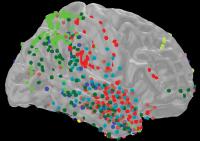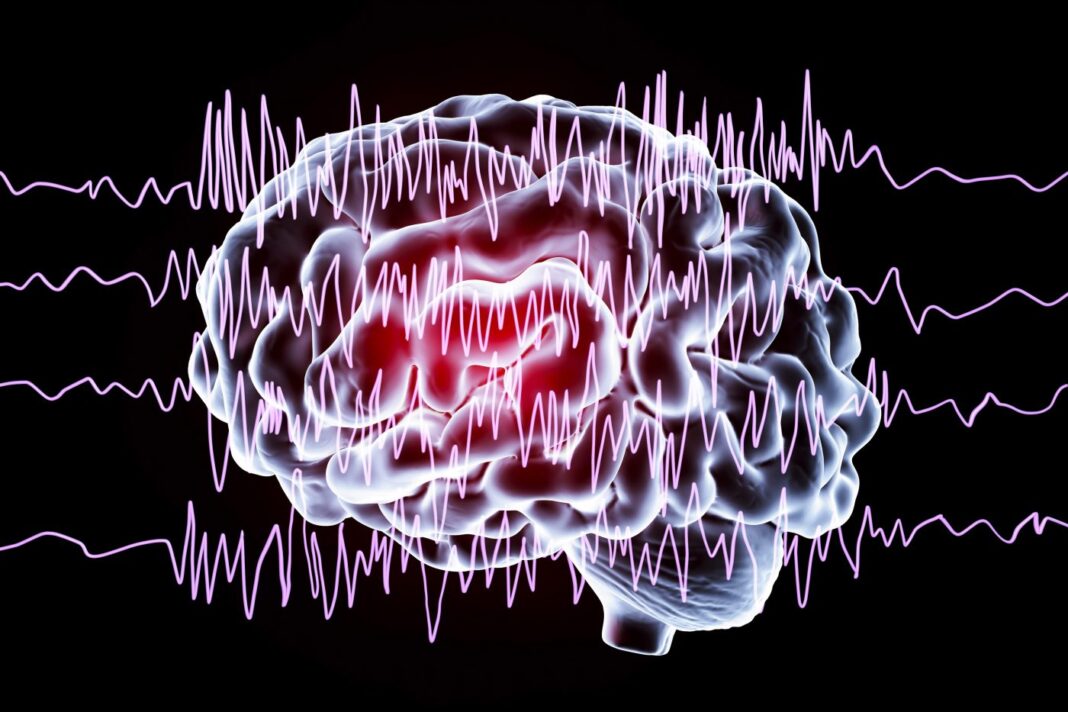A set of high-frequency brain waves may help us unconsciously set expectations of the world around us and gauge when things are different by comparing memories of past and present experiences. In a study done on epileptic patients with EEG electrodes implanted into their brains, NIH scientists showed how feedforward signals can establish a link between a single visual experience and electrical waves in the frontal and temporal lobes of the brain.
“Our results suggest that every experience we store into memory can be used to set our expectations and predictions for the future,” said Kareem Zaghloul, MD, PhD, principal investigator at the NIH’s National Institute of Neurological Disorders and Stroke (NINDS), and senior author of the study, “Feedforward prediction error signals during episodic memory retrieval,” published in Nature Communications. “This study shows how the brain uses certain neural activity patterns to compare our expectations with the present. Ultimately, we hope that these results will help us better understand how the brain portrays reality under healthy and disease conditions.”
Rafi Haque, an MD, PhD student at Emory University School of Medicine, and the first author on the study, began by testing the hypothesis that predictive coding determines how the brain encodes a type of memory called episodic memory, a type of long-term memory that involves conscious recollection of previous experiences together in the context of time, place, and emotions.
The theory of predictive coding puts forward that one of the main functions of the brain is to generate an internal model of the world in order to predict future environmental input. According to this theory, higher-order neural circuits send feedback to lower-order circuits, in the highly evolved neocortex of the brain, to predict sensory input and to reduce any redundancies of information when processing new stimuli.
“Predictive coding basically states that the brain optimizes neural activity for processing information. In other words, the theory forecasts that the brain uses more neural activity to process new information than it does for things that we are familiar with,” said Haque. “Years of research has shown that over time this is how we learn to expect what common sights, like green grass, look like or everyday noises, such as certain bird chirps, sound like. We wanted to know whether the brain uses a similar process to manage our experiences.”
Haque and his colleagues worked with 14 patients with drug-resistant types of epilepsy whose brains had been surgically implanted with grids of electrodes as part of an NIH Clinical Center trial aimed at diagnosing and treating their seizures. Initially, patients were asked to memorize a series of four natural scenes displayed on a computer screen, such as a brown bicycle leaning upright on a kickstand in front of a green bush.
A few seconds later they were shown a new set of images. Some images were the same as before while others were slightly modified by adding or removing something, such as a red bird, from the scene. The patients were then asked whether they recognized the scene or noticed something different. Within three seconds, patients successfully recognized 88% of the repeated scenes, 68% of scenes that were missing something, and 65% of the ones in which something was added.
An in-depth study of a subset of the patients showed that they successfully located 82% of additions and 70% of removals but while their eyes fixated frequently on additions they rarely fixated on areas in the scene where something was missing.
“Overall, these results suggest it takes just one moment to not only remember a new experience but also to use memories of that experience to set future expectations,” said Zaghloul.

“These results support the idea that memories of visual experiences follow a certain pathway in the brain,” said Haque.
The surge in activity is stronger when the patients recognize a change to a scene, the authors noted. Another lower frequency wave synchronously rumbles through the visual and memory centers of the brain when a change is correctly recognized.
“Our data supports the idea that our expectations of visual experiences are controlled by a feedback loop between the visual cortex and the medial temporal lobe,” said Zaghloul. “High-frequency waves of neural activity appear to carry an error message when we see something that does not match our expectations, while the lower frequency waves may be updating our memories.”



